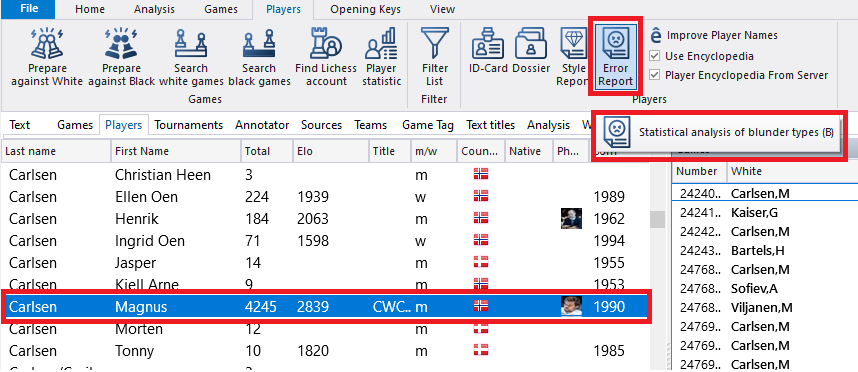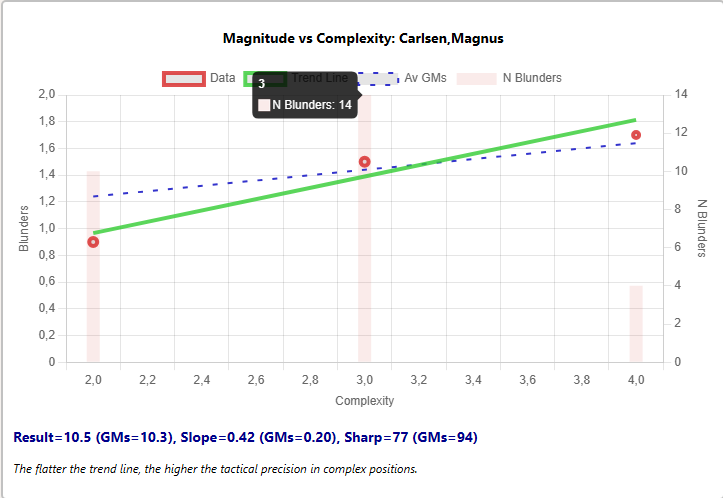|
Error Report |

|

|
|
|
Error Report |

|

|
Error Report
The error report analyzes a player's tactical abilities by examining the number, size, and type of mistakes in the selected games for analysis. Based on these games, a so-called "error Elo" is calculated, which is relatively close to the player's actual Elo rating in about 70 percent of cases.
If the calculated error Elo is significantly lower than the actual Elo, it may indicate that focused training in areas like variation calculation and tactical pattern recognition could help improve the player's strength. The error report thus allows for the targeted identification of weaknesses in tactical decision-making and helps derive specific training measures to optimize performance.
You can access the error report feature directly from the player index.

Mark the player in the list whose games you want to analyze. Alternatively, you can select games within a game list, right-click, and use the error report feature from the context menu.
The error report provides four graphs:


Error Size and Complexity: There is a strong correlation between the complexity/sharpness of a position and the average size of mistakes. Intuitively, this makes sense, but the clarity of the relationship is surprising. Players who struggle with calculation tend to make more significant errors in sharp positions, which results in a steeper error curve. For top players and correspondence chess, the curve is nearly horizontal.

Frequency of Error Sizes: This graph shows how often a particular error size occurs, measured in 100 centipawns intervals. It is clear that stronger players make large errors less frequently.
Relevance to Result: This statistic categorizes errors based on their impact on the result. It distinguishes between cases where a winning position remains won after a mistake, or a bad position becomes a losing one. Some players tend to be inaccurate in good positions but very alert in bad ones, and vice versa.
Error Context: This highlights further patterns in which errors occur. There are differences in errors between stronger and weaker players, as well as between endgames and middlegames. Players who are under attack tend to make more mistakes than the attacker.
The error report can, to some extent, be used to identify engine use. In such cases, the error Elo is unusually high. The complexity line (first graph) becomes flat or downward, because the error size is independent of the position's difficulty level. This is more apparent in blitz games.
Note: The error report needs to analyze nearly every move of a game using an engine. For "accurate" analyses, this would take several minutes per game. However, the error report performs extremely quick, parallel searches, reducing the analysis time to a few seconds. This, by nature, results in less accuracy. Therefore, strong players are typically rated a bit lower.
When analyzing computer-generated games with the error report, you're comparing an engine result at a depth of around 12 with one at depth 30. In this case, the errors are more likely to be in the analysis rather than in the game itself. Nonetheless, the flat slope of the complexity curve will be immediately noticeable.
Tip: It is possible to evaluate multiple players at once. To do so, sort the player index, for example by Elo rating or number of games, so that the most important players appear at the top. Select multiple players (Ctrl-click), then start the error report. Alternatively, you can copy the desired players into a new database and select all players in the player index for analysis.
Note: Only the last 100 classical time control games per player are analyzed. Games in which the player was under 16 years old are ignored.